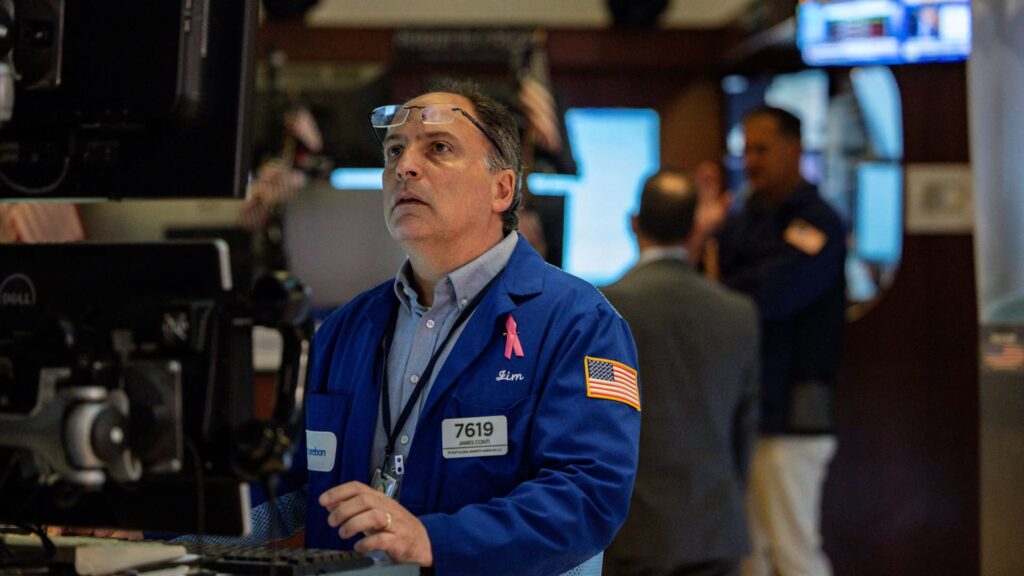Traders work on the floor of the New York Stock Exchange (NYSE) at the opening bell in New York on July 11, 2025.
Timothy A. Clary | Afp | Getty Images
Stocks closed lower Friday, a day after the S&P 500 posted a new record high and President Donald Trump announced a 35% tariff on Canada and threatened higher tariffs across the board.
The Dow Jones Industrial Average lost 279.13 points, or 0.63%, to close at 44,371.51. The S&P 500 slid 0.33% to end at 6,259.75, and the Nasdaq Composite ended the day 0.22% lower at 20,585.53.
Friday’s losses, driven by an escalation in the trade war, came after all three major averages rose during Thursday’s session.
After Thursday’s market close, Trump cited fentanyl as a reason for higher Canada duties, adding that they would go higher if the country retaliates. “If Canada works with me to stop the flow of Fentanyl, we will, perhaps, consider an adjustment to this letter,” Trump said in a letter posted on Truth Social.
Trump then told NBC News he was planning blanket tariffs of 15% to 20% on remaining countries, higher than the current 10% standard that investors had grown comfortable with.
“I think the tariffs have been very well-received. The stock market hit a new high today,” Trump told NBC News on Thursday.
The S&P gained 0.3% on Thursday to notch a new record, while the tech-focused Nasdaq finished higher by 0.1% as investors shrugged off any worries around the latest trade developments, including a 50% U.S. tariff on imported copper as well as a 50% tariff on Brazil unveiled this week.
However, on Friday, traders waited for an update from Trump on the European Union tariffs, but none came during market hours. It’s not clear whether the president will post a letter with a new rate like he did with Canada or simply give an update on progress of ongoing deal talks.
Friday’s losses pushed the major averages into the red for the week. The Dow Jones Industrial Average ended the week with a 1% decline, while the S&P and Nasdaq notched respective losses of 0.3% and 0.1%.
“This has been a week thus far where the rising rhetoric around trade didn’t adversely affect markets. Investors were able to look through that to a certain extent, but the order of magnitude with one of our most important trade partners that just got dumped in our laps overnight was an eye opener,” said Art Hogan, chief market strategist at B. Riley Wealth Management.
Next week, investors will need to navigate the start of second-quarter earnings reporting season, along with the release of some key inflation data.

